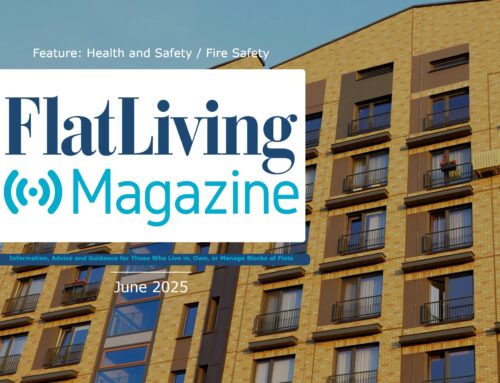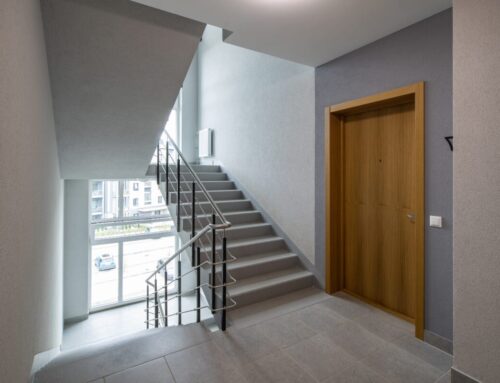What Insurance Do You Need to Protect Your Block and RMC?
Before the worst happens and you need to make a claim, Belinda Thorpe from Residentsline Flats Insurance provides an essential guide to insurance to help you check that you have the right cover in place.
 Residential Buildings Insurance for Flats and Apartments
Residential Buildings Insurance for Flats and Apartments
Residents’ Management Company (RMC) directors and committee members often take on the task of arranging buildings insurance on behalf of their fellow residents. Ensuring your block is adequately covered is a major responsibility and ensuring a competitive price as well as comprehensive protection for leaseholders’ property can be quite a challenge.
First, it is important to ensure that your Declared Value or Buildings Sum Insured is adequate and that the cover you obtain is wide enough to protect the interests and investment of you and your fellow flat owners. Building material and labour costs continue to rise, and it is therefore vital to ensure that you take out insurance based on an up-to-date reinstatement valuation.
Re-valuations should be carried out at least every five years by a chartered valuation surveyor who will take into account any changes or improvements made to the property since the level of cover was first set. Many people wrongly assume that if the cost of repairing their property under a claim is less than the Sum Insured, it will automatically be paid. This is not true: pay-outs are based on the level of cover being sufficient to reinstate the whole property.
The second (and vitally important) thing to remember is that policies are not all the same. The company offering the cheapest deal may not necessarily provide the level of cover you need. So, before you take out any policy, check that it includes the following:
- “All Risks” cover (including subsidence)
- Employers Liability Insurance
- Public and Property Owners Liability cover
- Lessees fixtures and improvements
- Alternative Accommodation or Loss of Rent
- Loss or unauthorised use of Metered Utilities (Water)
- Cost of tracing leakage of oil or water
- Loss of or Damage to contents in communal areas
- Damage to underground Pipes and Cables
- Unrestricted cover on vacant or rented flats or apartments
- Machinery breakdown
- Damage to fixed glass, shower trays and sanitary fittings
- Storm damage to fences and gates
- Legal expenses
- Replacement of communal door locks following theft of keys
Most residential buildings insurance policies have a minimum of £1,000 subsidence excess. However, the excess for all other damage is usually negotiable. RMC directors should always check that the description of the property insured is accurate and includes cover for the outbuildings, gates, fences and underground pipes and cables that the RMC is responsible for insuring. Also, most policies are index-linked to ensure the sums insured remain adequate – always confirm with your insurer that this is the case.
Terrorism Insurance: Is It Necessary?
Terrorism insurance is unlikely to be the first policy you contemplate when arranging cover for your block of flats. It is, however, highly important.
This is because standard Buildings Insurance policies don’t normally include damage from terror attacks in the policy terms. That means that, should the worst happen and your block is damaged due to terrorism, you would not be able to claim through your policy.
A separate policy is required: Terrorism Insurance.

However unlikely it might appear, if an incident did occur and there was no insurance in place, the RMC directors could be held responsible. Don’t forget that directors have personal responsibility for their decisions and actions within the Residents Management Company.
Taking out the appropriate cover is a small price to pay in comparison to risking your personal assets.
For a quote for your Buildings Insurance, click here to complete our online form.
See more from London Flats Insurance and Flat Living Insurance on other products below:
Buildings Declared Value and/or Sum Insured?
Your Policy Schedule will often show two values: the Declared Value and the Sum Insured. The difference between these two figures is simply how the insurance contract handles inflation during the insured period.
The Declared Value is simply the cost to rebuild your property in full, however you do not need to add any increase for inflation during the insured period or during the time it takes to rebuild the property following a claim. A “Day One” Clause provides protection against the effects of inflation during the period of insurance for a given percentage uplift figure. The percentage uplift will vary from insurer to insurer but will typically be between 10% and 50%.
The insurers still require a rebuilding figure to be given to them (i.e. the Declared Value), and in return they will confirm what the total Sum Insured equates to inclusive of this Day One protection.
For example, a property with a rebuild figure of £500,000 which represents the Declared Value, will have a Sum Insured of £600,000 if the insurance policy contains a 20% Day One Uplift Clause.
The Declared Value figure and the Sum Insured figure are often confused. If the Declared Value is incorrect then problems may still arise with underinsurance as the Day One Uplift is only meant to protect against inflationary problems and not valuation inaccuracies. The Average Clause will still apply.

When arranging buildings insurance quotations on a “Day One” basis the insurers will need to know the Declared Value and not the Sum Insured. In the event of a complete loss, the insurers will then pay the maximum of the Declared Value, plus the amount by which inflation has increased the Declared Value stated at the start of the policy period, without you paying more premium.
Making Sure Your Block is Protected Against Inflation Increases – Index Linking or Day One
Unsure about the different methods used to protect your insurance policy from inflation?
There are two main methods used by Insurers to protect policyholders from the effects of inflation during the period of cover – Index Linking and Day One Index Linking.
Index Linking of your Sum Insured (which should represent the buildings full reinstatement cost) is the preferred option for residential properties. Index linking provides protection for your block against inflation during the period of “insurance without a limit”, with the increase consolidated into a higher Sum Insured at next renewal. There is no additional premium charged for this protection.
The rebuilding cost of the property is stated as the Declared Value on your Policy Schedule and a percentage maximum uplift is provided to cover expected inflation. For example, if a property has a rebuilding cost of £1m and a 25% Day One clause applies, the Sum Insured becomes £1.25m. However, the maximum payable at the time of claim is only £1m plus the inflation percentage to the date of damage.
Condition of Average
It is well known that if a property is insured for say, 75% of its rebuilding cost, then the claim payment will be 75% of the loss. However, specialist policies may offer a percentage “leeway” to help prevent the Insured being penalised for inadvertently under insuring. As long as the Sum Insured declared is within the Condition of Average percentage shown in your policy wording (normally 85%) and the shortfall is inadvertent, the policyholder will not be penalised at the time of a claim.
VAT: Does your policy need your rebuilding cost to include or exclude VAT? It’s in the small print.
To VAT or Not to VAT?
All Residents’ Management Companies need to ensure that the requirements set out in their Lease are covered by their blocks insurance policy and are reviewed at each renewal of cover.
It is also recommended by the RICS Management Code that properties should have a valuation completed and reviewed by an appropriately qualified Surveyor on a regular basis.
When arranging an insurance policy, your insurer/broker requires a Rebuilding Cost, often referred to as Declared Value, which is the basis of your premium calculation. The Insurer will include a further percentage to allow for inflation, during the insured period or during the time it takes to rebuild the property following a claim, of normally between 10% and 50%.
However, should we add VAT to our Declared Value or NOT?
Facts:
- If your block is completely destroyed and has to be rebuilt, these costs do not attract VAT
- If your block is 90% destroyed and Insurers decided to rebuild your block rather than knock it down and rebuild it totally then these costs would attract VAT at 20%
Example:
The Declared Value of the block is £1,000,000. If the block were 90% damaged and the Insurer decides to rebuild, the costs that could equate from this loss are £900,000 + 20% VAT = £1,080,000.

In this instance, the Insurer would only pay £1,000,000 and there would be £80,000 needing to be found to complete the rebuild.
So, should you include VAT or NOT?
There are those that think it would be rare that Insurers would choose to rebuild where a property was 90% damaged, however, this is quite a risk to accept!
In a recent First Tier Tribunal, it was agreed that adding VAT to the Declared Value provided to Insurers should be dependent on your Insurers stance and how their policy is written.
Having reviewed several products, we found that some Insurers expect VAT to be included, others don’t, and some Insurers are completely silent on the matter.
This subject, I am afraid, can be a minefield. Unless your Insurance Policy states how your Insurer reacts to this situation, I recommend that you contact them to obtain their advice. It’s always better to be safe than sorry!
(In the FTT case mentioned above they held that it was reasonable to include VAT in the sum insured).

 Residential Buildings Insurance for Flats and Apartments
Residential Buildings Insurance for Flats and Apartments


Leave A Comment